
by Julienne Givot | Jun 17, 2012 | Major Arcana Heros Journey, Podcasts |
Listen Now! or Subscribe in iTunes
You can’t plan this stuff! In card number 10, the Archetypal Podcast is met with the Wheel of Fortune – a fortuitous card that marks a new stage of awareness in the Fool’s journey. After evaluating new moral issues presented by Justice, and time to reflect with the Hermit, the Fool/Hero is ready to chance life more consciously with The Wheel of Fortune. Though she thinks she may have control, the Wheel (often a favorable card when appearing in Tarot readings) quickly shows her that much of life is an inexorable force operating out of our control. Taking their own risks with this card, Julienne and Cyndera discuss an archetype addressing the fortune seekers of the world – The Gambler. Also the voice of the Victim emerged in the podcast, whispering woes from the bottom of the Wheel and warning against buying furniture in “Suckland”. From lessons learned in both life’s wins as well as losses, the message of this card is to let go and spin where the wheel takes you. As always, there is a lively discussion of film, psychological inquiry and insight.
 Examples of the Gambler/Wheel of Fortune Archetype in film:
Examples of the Gambler/Wheel of Fortune Archetype in film:
Catch Me If You Can (2002) Leonardo DiCaprio and Tom Hanks
Ocean’s Eleven (2001), Twelve (2004) and Thirteen (2007)
Key Words:
• Turning point —– Opportunities —– Possibilities
• Destiny —– Fate —– Superior Forces —– Movement
• Development —– Activity —– Surprises —– Expansion
• Sudden Events —– Speed —– New Developments —– Life Cycles
• Interpretation —– Sudden Change —– Dissension —– Approachability
Like what you heard on the podcast? Share us on Facebook (handy button below) or give us a review on iTunes.

by Julienne Givot | Jun 5, 2012 | Uncategorized |

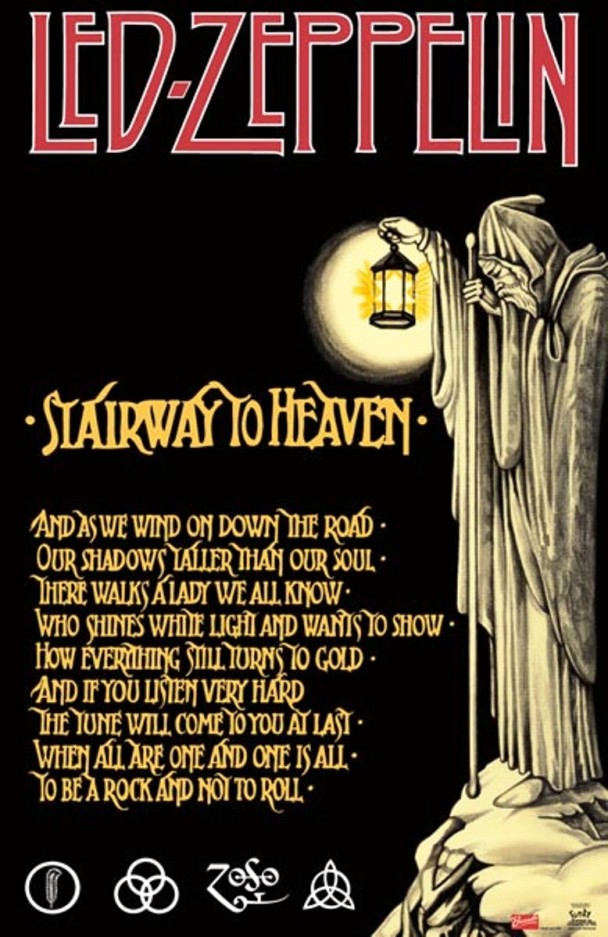
by Julienne Givot | May 21, 2012 | Major Arcana Heros Journey, Podcasts, Pop Culture Archetypes |
The Tenth edition of the Archetypal Podcast takes us to meet The Hermit, a figure waiting off the beaten track with the wisdom

that only remote regions can give. Card number 9 allows our hero traveling through the Major Arcana to either meet or become this humbled figure full of in-sight, as represented by his seeking lantern. A re-evaluation of his journey is required after a run-in with the objectivity of Justice, before he can once again chance the Wheel of Fortune (Card number 10). Consideration of this card allows us all a moment to reflect without being sucked into eternal isolation – the shadow side of the Hermit. Fresh from a (hot) visit from her hometown of Joshua Tree, California, Cyndera shares fresh inspiration after encountering an old friend who embodies the Hermit archetype. Julienne takes us on a tour of the hermitic nature of the American literary Renaissance along with some insights on the Hermit from film and popular culture.
Light Aspect: Integration, Introspection
Shadow Aspect: Isolation
Examples of the Hermit:
Henry David Thoreau (esp his book Walden) there is a great podcast about Thoreau from the public radio program ‘To The Best of Our Knowledge’.
Buddhist teacher, Pema Chodron, author and Catholic mystic Thomas Merton, poet Emily Dickinson, naturalist John Muir Also of interest is the Hermitary website filled with even more insight on the Hermit archetype.
 I also found it amusingly appropriate that Led Zeppelin used the image of the Hermit for their single ‘Stairway To Heaven’ which carries lyrics capturing the ideas of the Hermit’s quest.
I also found it amusingly appropriate that Led Zeppelin used the image of the Hermit for their single ‘Stairway To Heaven’ which carries lyrics capturing the ideas of the Hermit’s quest.
In film:
Robert Duvall in Get Low (2009)
Emile Hirsh in Into the Wild (2007)
Bill Murray in Lost in Translation (2003)
Forest Whittaker in Ghost Dog (1999) (Combination of Hermit and Warrior)
Key Words:
• Introspection —– Silence —– Guidance —– Reflection
• Solitude —– Looking inward —– Reclusion —– Being quiet
• Inner search —– Deep understanding —– Isolation
• Distance —– Retreat —– Philosophical attitude
Like what you heard on the podcast? Share us on Facebook (handy button below) or give us a review on iTunes.
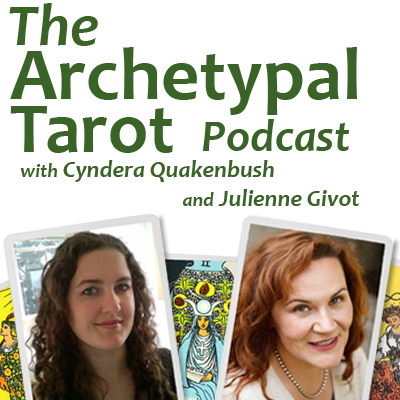
by Julienne Givot | Apr 29, 2012 | Major Arcana Heros Journey, Podcasts, Pop Culture Archetypes |
Listen Now! or Subscribe in iTunes
The Ninth edition of the Archetypal Tarot Podcast attempts to do justice to the Justice card, which

is number 8 of the Major Arcana.
After setting out on a newly realized journey on the Chariot, our hero quickly faces some form of judgement. Justice, pictured as a stern-looking woman is reminiscent of the Goddess of Wisdom, Athena, who assists our hero to view his challenges with a rational, dispassionate perspective. Holding both sword and scales, Justice cuts through to truth and weighs the balance of our ways. Listen in as Julienne recounts the myth of Solomon and also explores the shadow side of Justice. The archetype of the Avenger is briefly explored as Cyndera poses a question to our podcast audience: Do the ends justify the means if the oppressed triumph over their oppressors by using methods that mirror their oppressors’ ways?
We are asked to leave the subjectivity of the Hero for the wisdom and objectivity of the Judge and Mediator archetypes.
Listen in on a conversation with Tarot consultant Cyndera Quakenbush and
Archetypal Consultant, Julienne Givot, as they discuss the symbolic and real world qualities of these archetypal characters.
Recommended reading:
Jung and Tarot: And Archetypal Journey by Sallie Nichols
Examples of the Judge in Film/TV/Drama:
Empowered/Light Aspect
- Gene Hackman in Mississippi Burning ( 1988)
- Gregory Peck in To Kill A Mockingbird (1962)
- Anthony Hopkins in Amistad (1997)
- Meryl Streep in Iron Lady (2011)
- Hugo Weaving in The Lord of the Rings (2001)
- The character of Oberon in Midsummer Nights Dream
Un-empowered/Shadow aspect:
- Raymond Massey in East of Eden (1955)
- Lena Headey as Cersiei in Game of Thrones (HBO 2011/12)
- Tsai Chin in Joy Luck Club – both shadow and light (1993)
Like what you heard on the podcast? Share us on Facebook (handy button below) or give us a review on iTunes.

by Julienne Givot | Apr 29, 2012 | All Articles, Archetypes and Dating |

©Kevin Dooley
Dating can feel like a trip to the amusement park, filled with excitement, ups, downs and the occasional sense of inertia. Certain archetypes can help serve as guides for keeping grounded while amidst the thrills and spills of dating life. So far I’ve written about archetypal attraction based on shared patterns, paired needs and romantic chemistry. Now it’s time to dig into some of the archetypal characters that will likely show up for everyone dating. They also can play into why some people don’t even dip their toe into the dating pool. I call these our Survival Archetypes. They are roles we take on when we feel vulnerable as well as ones that can guide us to authentically being ourselves.
We all work with the survival archetypes. Some people are so in the thrall of the unempowered aspects of them that they have a hard time seeing beyond their negative effects. It’s my hope to turn this around a bit. Each archetype should be used as a guide – not a way to judge yourself poorly. In fact they are an excellent way of spotting how you might judge yourself and how to make a more empowering choice.
The four dating Survival Guides are: The Victim, The Prostitute, The Child and The Saboteur.
The names of these archetypes might seem to some harsh or intimidating, but that’s because we tend to know them only by their pathology. They also contain a wonderful possibility that often gets overlooked.
I launched this series on dating by recommending attention as a key for getting clear on who you are and who you want to form a relationship with. Paying attention to your thoughts and behaviors by seeing them as patterns helps you get clear on your options. That clarity can get lost however if we use the pattern to judge ourselves poorly or condemn ourselves.
The technology of using archetypes is best served with a practice akin to Jon Kabat-Zinn’s Mindfulness Based Stress Reduction (MBSR) coupled with self-compassion. The basis of MBSR is moment-to-moment non-judgmental awareness. Awareness and self compassion are powerful practices in life and especially in the necessarily vulnerable experience of dating. Developing awareness and self compassion practices can make all the difference in being able to be authentic (you know, the real you) and attract the right people into your life. This isn’t just me talking, there are increasingly more scientific studies showing how awareness and self compassion are amazing for us in every aspect of our lives, from reducing stress, relieving pain and bringing greater resilience and happiness to practitioners. Two other pioneers in this field are Kelly McGonigal, Phd and Kristen Neff, Phd. Neff’s book Self-Compassion: Stop Beating Yourself Up and Leave Insecurity Behind is an excellent starting place.
This series will focus on each of the four survival archetypes as they might show up for a single person looking to meet a significant other. They are of course useful to those already in relationship or those thinking about ‘getting back out there’. I’ll share ideas on ways to bring awareness to your actions and choices in a way that helps you enjoy yourself more in the process of creating new relationships. If we are enjoying ourselves from the beginning, we’ll be less prone to heap expectations on the person we are dating and vice versa. Sound good? Look for updates soon and links will be added to the list above so you can jump to the next exciting article.

by Julienne Givot | Mar 23, 2012 | Major Arcana Heros Journey, Podcasts, Pop Culture Archetypes |
Listen Now! or Subscribe in iTunes
The Chariot: Hero, Warrior, and the Crossing of the First Threshold

The Eighth edition of the Archetypal Tarot Podcast explores the movement and meaning encompassed by the Chariot, card number 7 of the
Major Arcana. For the first time, we see our hero of the deck breaking beyond the boundary of the Emperor’s domain. In the last stage, the Lovers, he was faced with a choice and is now thrust down a particular path, reminiscent of the “crossing of the first threshold” of
Joseph Campbell‘s stages of the
hero’s journey. Will all the wisdom of the figureheads from the previous stages help our hero in the real world? Julienne Givot connects in the ancient story of Arjuna as he faces the fears of battle under the guidance of Krishna. Cyndera Quackenbush illustrates the shadowy consequences of the heroic impulse by recounting the myth of Phaeton. The Chariot card allows us to find our own courage in the face of bold undertakings while keeping an eye on the dangers of hubris.
Listen in on a conversation with Cyndera Quakenbush and Julienne Givot, as they discuss the symbolic and real world qualities of these archetypal characters.
Recommended reading:
Way of the Peaceful Warrior by Dan Millman
The Seven Spiritual Laws of Superheroes: Harnessing Our Power to Change the World by Deepak and Gotham Chopra
King, Warrior, Magician, Lover: Rediscovering the Archetypes of the Mature Masculine by Robert Moore and Douglas Gillette
Examples of the Hero in Film/TV:
Empowered/Light Aspect
- Keanu Reeves as Neo in The Matrix (1999)
- Mark Hamill as Luke Skywalker in Star Wars (1977)
- Emma Thompson as Vivian Bearing in Wit (2001, TV)
- Judy Garland as Dorothy in The Wizard of Oz (1939)
- Ed Asner as Carl Fredrickson in UP (2009)
Shadow aspect:
- Jeremy Renner in The Hurt Locker (Hero/Warrior both shadow and light) (2010)
- James Franco as The 2nd Green Goblin in Spiderman 3 (2007)
Examples of the Warrior in Film/TV:
Empowered/Light Aspect
- Harrison Ford in Star Wars (1977)
- Jake Gylenhall as Anthony Swofford in Jarhead (2005)
- Sarah Michelle Geller in Buffy the Vampire Slayer (1997, TV)
- Shirley MacLaine in Terms of Endearment (battling cancer) (1983)
- Zoe Saldana as Nyteri in Avatar (2009)
- Katee Sackoff as Starbuck in Battlestar Gallactica (both shadow and light aspects, 2004, TV)
Shadow Aspect:
- Vin Diesel in the The Chronicles of Riddick (2004)
- Stephan Lang as Colonel Quaritch in Avatar (2009)
Like what you heard on the podcast? Share us on Facebook (handy button below) or give us a review on iTunes.

by Julienne Givot | Mar 5, 2012 | Uncategorized |

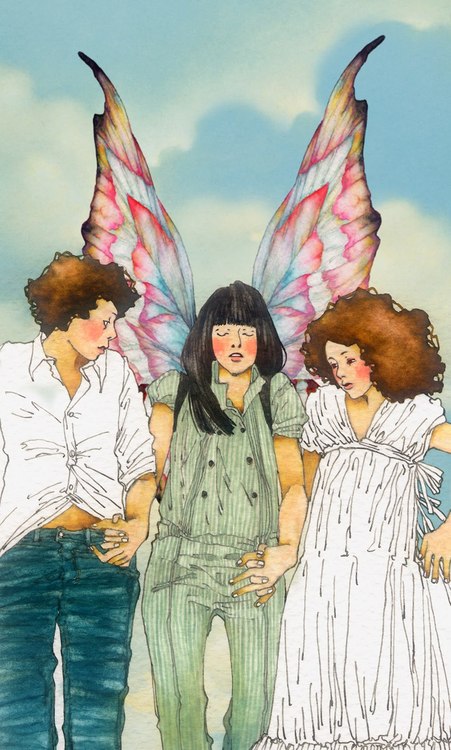
by Julienne Givot | Feb 15, 2012 | Major Arcana Heros Journey, Podcasts, Pop Culture Archetypes |
Listen Now! or Subscribe in iTunes
 The Seventh edition of the Archetypal Tarot podcast reveals our heroic Fool at his/her first genuine choice point represented by card number six, The Lovers. The Lovers brings into focus this important first choice and reminds us that love, balance and companionship are called for. This stage has us examine the archetypes of the Lover as well as the Companion. A reminder to access both our masculine ‘doing-ness’ and feminine receptivity.
The Seventh edition of the Archetypal Tarot podcast reveals our heroic Fool at his/her first genuine choice point represented by card number six, The Lovers. The Lovers brings into focus this important first choice and reminds us that love, balance and companionship are called for. This stage has us examine the archetypes of the Lover as well as the Companion. A reminder to access both our masculine ‘doing-ness’ and feminine receptivity.
Listen in on a conversation with
Tarot Dream Stone consultant Cyndera Quakenbush and
Archetypal Consultant, Julienne Givot, as they discuss the symbolic and real world qualities of these archetypal characters.
Further exploration of the archetype of the Lover: Seizing The Power of The Lover Archetype
Recommended reading:
We: Understanding the Psychology of Romantic Love by Robert A. Johnson
The Eden Project: In Search of he Magical Other by James Hollis
Cyndera recommends: The Lovers Path Tarot set by Kris Waldherr
Archetypes of The Lovers card:
Companion
Lover

The Lovers from the Dreaming Way Tarot
Examples of the Companion in Film/TV:
- Susan Sarandon and Geena Davis in Thelma and Louise (1991)
- Ben Affleck in Good Will Hunting (1997)
- Russell and Dug in the Pixar film UP ( 2009)
Examples of Both Light and Shadow:
- TV Show “Entourage”
- The Hangover
- Bridesmaids (2011)
Shadow or disempowered aspect:
- Eve Arden & Mare Winningham Mildred Pierce (1945 and 2011)
- Winona Ryder in Heathers (1988)
- The Social Network (2011)
Examples of the Lover in Film/TV:
- Dead Poet’s Society especially Neil Patrick Harris and Josh Charles (1989)
- Ewan McGregor in Moulin Rouge (2001)
- Charlie Cox in Stardust (2007)
- Humphrey Bogart and Lauren Bacall in Casablanca (1942)
- Salma Hayek in Frida (2002)
- Cary Elwes in Princess Bride (1987)
- Nicholas Cage in Moonstruck (1987)
Shadow or disempowered aspect:
- Glenn Close in Fatal Attraction (1987)
- Tom Cruise in Vanilla Sky (2001)
- Lupe Ontiveros as Yolanda Saldivar in the film Selena (1997)
- Sandra Bullock in All About Steve (2009)
Like what you heard on the podcast? Share us on Facebook (handy button below) or give us a review on iTunes.
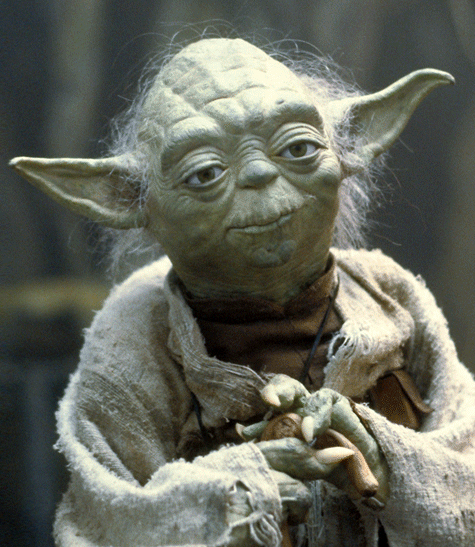
by Julienne Givot | Jan 12, 2012 | Major Arcana Heros Journey, Podcasts, Pop Culture Archetypes |
Listen Now! or Subscribe in iTunes
 The Sixth edition of the Archetypal Tarot Podcast explores the meaning of the Hierophant card of the Tarot as a stage of a journey where one examines the traditions, organizations and structures of one’s life as well as how and who to seek higher guidance from. The Hierophant, also called the Pope card in traditional Tarot decks also symbolizes the archetypes of the Priest, Guide, Guru, Shaman,Wise Man and Messiah. Truly a symbol of higher wisdom, this card is a symbol of seeking greater or spiritual knowledge.
The Sixth edition of the Archetypal Tarot Podcast explores the meaning of the Hierophant card of the Tarot as a stage of a journey where one examines the traditions, organizations and structures of one’s life as well as how and who to seek higher guidance from. The Hierophant, also called the Pope card in traditional Tarot decks also symbolizes the archetypes of the Priest, Guide, Guru, Shaman,Wise Man and Messiah. Truly a symbol of higher wisdom, this card is a symbol of seeking greater or spiritual knowledge.
Listen in on a conversation with
Tarot Dream Stone consultant Cyndera Quakenbush and
Archetypal Consultant, Julienne Givot, as they discuss the symbolic and real world qualities of these archetypal characters.
Archetypes of the Hierophant:
God
Wise Man
Priest
Shaman
Guru
Guide
Messiah
Examples of the Heirophant Archetype’s light aspects in Film:
- Yoda in the Star Wars series
- Laurence Fishburne “The Matrix” trilogy (Priest/Wiseman)
- Ben Kingsley in “Gandhi” (1982)
- Pat Morita in “The Karate Kid” (1984)
Examples of the Heirophant Archetype’s shadow aspects in Film:
- Paul Dano in “There Will Be Blood” (2007)
- Tom Cruise in “Magnolia” (1999)
- Robert Mitchum in “The Night of the Hunter” (1955)
Like what you heard on the podcast? Share us on Facebook (handy button below) or give us a review on iTunes.
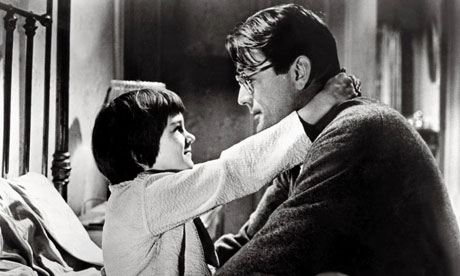
by Julienne Givot | Dec 12, 2011 | Archetypal Characters, Major Arcana Heros Journey, Podcasts, Pop Culture Archetypes |
 The Fifth edition of the Archetypal Tarot Podcast explores the meaning behind the Emperor card of the Tarot as a stage of a journey where one is asked to create structure and practical plans for your project or dream so that it can be fortified before going on to the next stage of the journey. The Emperor symbolizes the archetype of the Father as well as the King. Listen in as Julienne and Cyndera discuss these important patterns to our growth and flourishing.
The Fifth edition of the Archetypal Tarot Podcast explores the meaning behind the Emperor card of the Tarot as a stage of a journey where one is asked to create structure and practical plans for your project or dream so that it can be fortified before going on to the next stage of the journey. The Emperor symbolizes the archetype of the Father as well as the King. Listen in as Julienne and Cyndera discuss these important patterns to our growth and flourishing.
Listen Now! or Subscribe in iTunes
Listen in on a conversation with
Tarot Dream Stone consultant Cyndera Quakenbush and
Archetypal Consultant, Julienne Givot, as they discuss the symbolic and real world qualities of these archetypal characters.
Books mentioned in the podcast:
We: Understanding the Psychology of Romantic Love by Robert A. Johnson
He: Understanding Masculine Psychology by Robert A. Johnson
She: Understanding Feminine Psychology by Robert A. Johnson
Below is an expanded list of these two archetypes in popular culture.
Examples of the Father Archetype’s light aspects in Film and Television:
 Gregory Peck in ”To Kill a Mockingbird'”(1962)
Gregory Peck in ”To Kill a Mockingbird'”(1962)- Frances McDormand in “Almost Famous” (2000)
- Bill Cosby in “The Cosby Show”
- Will Smith in “The Pursuit of Happyness” (2006)
- Paddy Constantine in “In America” – (2002) directed by Jim Sheridan
- Sean Connery in “Indiana Jones and the Last Crusade” (1989) both shadow and light
- “Riding Alone for Thousands of Miles” (2005) directed by Zhang Yimou
- Alan Arkin in “Edward Scissorhands” (1990)
- Felicity Huffman in “Transamerica” (2005)
Examples of the Father Archetype’s shadow aspects in Film and Television:
- Jon Hamm in “Mad Men” (AMC)
- John Lithgow in “Dexter” (Showtime) and “Footloose” (1984)
- Kevin Spacey in “American Beauty” (1999)
- James Gandolfini in “The Sopranos” (HBO)
Examples of some of the shadow and light characteristics of the Father archetype but also an example of the cultures misunderstanding of this archetype:
- John Cryer in “Two and Half Men” (CBS)
- Homer Simpson in “The Simpsons” (FOX)
- Ed O’Neill in “Married with Children” (ABC)
Examples of the King Archetype’s light aspects in Film and Television:
- Edward James Olmos in Battlestar Gallactica (SciFi Channel) (both aspects)
- Colin Firth in “The King’s Speech” (2010)
- William Moseley as Peter in the Narnia Chronicle series
- Keisha Castle Hughes and Rawiri Paratene in Whalerider (2002)
- Sean Connery in “The Man Who Would be King, First Knight, Time Bandits (both aspects)
- Good King Wenceslas (myth / song)
Examples of the Father Archetype’s shadow aspects in Film and Television:
- Marlon Brando in The Godfather (king/father)
- Christopher Walken in “The King of New York” (1990)
- James Gandolfini in “The Sopranos (HBO)
- Darth Vader in Star Wars
- John Noble as Lord Denethor in the “Lord of The Rings: Return of the King” (2003)
Like what you heard on the podcast? Share us on Facebook (handy button below) or give us a review on iTunes.

by Julienne Givot | Oct 12, 2011 | All Articles, Archetypal Characters, Real Life Archetypes, The Core Archetypes |
Little things can mean a lot. Let’s say you’re having a crappy day and you’re at the store when the cashier pulls out a coupon that saves you a dollar. This gives you a boost and you walk out the door in a better mood. Maybe you don’t honk at the numbskull ahead of you for doing whatever it is that annoys you. That person doesn’t get irked with you for being a numbskull honking at them and who knows what other little improvements occur because someone did you a solid just for the heck of it. Little bits of beauty & generosity have a tendency to carry on long after their tipping point. Like watching a TED talk and getting inspired to write an article about something both simple and radically important about the patterns at work in our lives.
Neil Pasricha decided to do something seemingly small when he was going through a very rough patch in his life. His  marriage was falling apart, his best friend took his own life and he naturally was finding it really hard to think of anything good. He started a blog in order to record and share what he called 1000 Awesome Things, figuring that it might help him focus on the positive again. Little did he know that this one effort would have him publishing books, calendars, TED talks and receiving a Webby Award for his blog in 2010. All of this AND bringing a grin or a LOL to millions of readers. Neil’s 17 minute talk about how all of this came about is totally worth watching so, go ahead, it’s right down there, I’ll wait. Then you can read about how this talk is an invocation of three of your core archetypes. (Or you can just skip to the next bit.)
marriage was falling apart, his best friend took his own life and he naturally was finding it really hard to think of anything good. He started a blog in order to record and share what he called 1000 Awesome Things, figuring that it might help him focus on the positive again. Little did he know that this one effort would have him publishing books, calendars, TED talks and receiving a Webby Award for his blog in 2010. All of this AND bringing a grin or a LOL to millions of readers. Neil’s 17 minute talk about how all of this came about is totally worth watching so, go ahead, it’s right down there, I’ll wait. Then you can read about how this talk is an invocation of three of your core archetypes. (Or you can just skip to the next bit.)
[ted id=1048]
Neil calls the major lessons of his experience the three A’s of Awesome: Attitude, Awareness and Authenticity. Each of these invokes one of your core archetypal patterns, the Victim (Attitude), the Child (Awareness) and the Prostitute (Authenticity). These are 3 of the 4 core universal archetypes common to everyone also known as the Survival Archetypes.
 Neil’s own story has a lot to do with the Victim archetype. He could have simply wallowed in his circumstances, let them take over and obscure the beauty in his life. The unempowered side of the Victim is the part of us that can get wrapped up in anger, sadness, and blame. We all have a Victim pattern in our lives – we have setbacks, get hurt, make mistakes, have crappy days when we feel like we’ve gotten the fuzzy side of the lollipop. We also have the empowered side of the Victim that makes choices to get out of the mire of blame and move on. Neil calls this ‘Attitude’ and I see it as using the pattern of the Victim to make a gigantic difference in a few small choices.
Neil’s own story has a lot to do with the Victim archetype. He could have simply wallowed in his circumstances, let them take over and obscure the beauty in his life. The unempowered side of the Victim is the part of us that can get wrapped up in anger, sadness, and blame. We all have a Victim pattern in our lives – we have setbacks, get hurt, make mistakes, have crappy days when we feel like we’ve gotten the fuzzy side of the lollipop. We also have the empowered side of the Victim that makes choices to get out of the mire of blame and move on. Neil calls this ‘Attitude’ and I see it as using the pattern of the Victim to make a gigantic difference in a few small choices.
The second ‘A’ of Awesome is Awareness and this invokes the Child archetype in us. The Child or as Neil says, our inner three year old, can be amazed at the simplest things, see beauty where most adults just see a knot in a piece of wood. Invoking the awareness of the Child archetype can help us enjoy something simple, open our eyes to opportunity or just appreciate something we would ordinarily pass by. This isn’t just a mood lifter, but a way to be in the world with a deeper sense of presence. The Child can be the antidote to a fast paced world where it’s difficult not to become jaded to little pleasures like putting on socks still warm from the dryer.
 The third ‘A’ is for Authenticity which believe it or not, invokes Prostitute archetype. The unempowered Prostitute is that part of us that will negotiate our self worth away because of someone elses opinion or keep us doing something we dislike because we feel we can’t do anything else. The empowered Prostitute reminds us that we can be authentic and make choices not based on fear but out of an authentic belief in ourselves. Neil uses the example of pro football player Rosie Grier and his penchant for needlepoint as an example of authenticity. Rosie could have easily kept his passion for something unmanly under wraps and let what other people might think of him control who he was (keep in mind this was the early 1970’s) but he didn’t. In fact he published several books on his interests. It doesn’t get much more authentic than that.
The third ‘A’ is for Authenticity which believe it or not, invokes Prostitute archetype. The unempowered Prostitute is that part of us that will negotiate our self worth away because of someone elses opinion or keep us doing something we dislike because we feel we can’t do anything else. The empowered Prostitute reminds us that we can be authentic and make choices not based on fear but out of an authentic belief in ourselves. Neil uses the example of pro football player Rosie Grier and his penchant for needlepoint as an example of authenticity. Rosie could have easily kept his passion for something unmanly under wraps and let what other people might think of him control who he was (keep in mind this was the early 1970’s) but he didn’t. In fact he published several books on his interests. It doesn’t get much more authentic than that.
While this archetype has a shocking name, it can be a guide for us to live authentically. Are you not doing something because you are afraid of what people might think of you? Are you putting the opinions of others over your authentic dreams and desires?

by Julienne Givot | Sep 19, 2011 | All Articles, Podcasts |
 I’ve partnered with my friend and colleague Cyndera Quakenbush to publish a new series of podcasts on archetypes. We are exploring the archetypes of the first 22 cards Tarot (also called the Major Arcana) as both individual patterns and as stages of a journey.
I’ve partnered with my friend and colleague Cyndera Quakenbush to publish a new series of podcasts on archetypes. We are exploring the archetypes of the first 22 cards Tarot (also called the Major Arcana) as both individual patterns and as stages of a journey.
Search for ‘Archetypal Tarot’ in your iTunes Store or visit our Podcast site http://archetypaltarot.podbean.com/ to subscribe using the links on the lower right. Each podcast is between 25 and 35 minutes long and is packed with insights, examples of the archetypes in modern life.
Feel free to leave comments, rate the podcast or submit a question.
If you’ve ever thought of the Tarot as just a card game used for fortune telling, you’ll be surprised at the insights found in these ancient images. We go beyond superstition and look a the Tarot as universal stories, stages and characters we see in our lives every day.
What is a podcast?
pod·cast/ˈpädˌkast/
Verb: Make (a multimedia digital file) available as a podcast.
Noun: A multimedia digital file made available on the Internet for downloading to a portable media player, computer, etc.
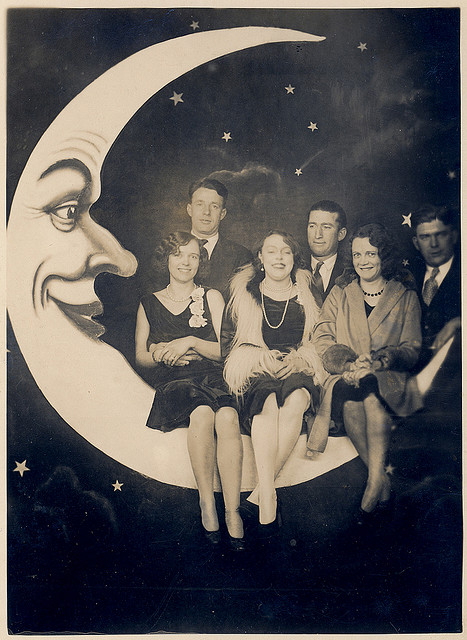
by Julienne Givot | Aug 13, 2011 | All Articles, Archetypes and Dating |
In part 2 of this series, I wrote about the ways of Romantic Archetypal Attraction where people are drawn together by the complimentary needs and attributes of their archetypes. Equally important is the kind of an attraction to someone because of shared qualities. If you are interested in seeing how archetypes can help you select better dates, then taking a look at how Shared Archetypal Attraction works will help.
Meeting someone with one or more of the same archetypes can mean near instant bonding as well as attraction. I think of this as a kind of friend chemistry, which when it comes to dating can be really important especially if you are looking for a long term relationship. Friend chemistry doesn’t mean it’s without romantic spark however, just that it doesn’t require it.
You probably share quite a few archetypes with your friends – it’s one of the main  ways people bond. Social groups and even companies stick together based on archetypal patterns. The archetypes of a group tend to form the goals and not the other way around.
ways people bond. Social groups and even companies stick together based on archetypal patterns. The archetypes of a group tend to form the goals and not the other way around.
Take a moment to think about your group of friends. How are you bonded together? Is it through the shared experience of working or sharing activities together? Do you have similar values and tastes? Which archetypes do you share? (here’s a list of some as a refresher). Now as you are interacting with people, possible dates or even looking through online dating profiles, what archetypes are you looking for?
Below are some examples of shared experiences and some of the possible shared archetypes:
- Being outdoors, hiking, biking, kayaking, bird watching, camping, working with animals: Nature Child, Adventurer, Athlete, Explorer
- Trying out new restaurants, cuisines, going to a spa, getting a massage, a mani-pedi, cooking a gourmet meal together: Hedonist, Gourmet (Foodie), God/Goddess (think Venus and Bacchus), Lover, Prince/Princess
- Going to concerts, museums, galleries, attending lectures on creativity, art. Touring a city by going to look at all of the neighborhood murals: Artist, Creator, Dreamer, Lover, Poet
- Pulling practical jokes, writing or performing comedy skits, telling jokes, goofing around, going to comedy shows, doing impersonations, telling funny stories: Clown, Fool, Trickster, Entertainer, Storyteller, Magical or Eternal Child (Peter Pan)
- Book clubs, study groups, classes and workshops: Student, Seeker, Detective, Teacher, Guide
- Volunteering, political rallies, fund raisers: Servant, Advocate, Activist, Philanthropist, Rebel, Revolutionary, Liberator
Sharing an archetype means you just naturally ‘get’ what you share with each other. There is generally little need to explain or cajole the other into an activity or discussion as it pertains to your shared archetype.

by Julienne Givot | Jun 29, 2011 | All Articles, Archetypal Characters, Archetypes and Dating, Pop Culture Archetypes |
The next in the series about Archetypal Attraction and Romantic Chemistry
The Knight and the Damsel are a matched set of patterns with naturally occurring complimentary attributes and dysfunctions. This can be true of any couple with these archetypes no matter their gender, same, different or otherwise. While we think of the Knight as a man and the Damsel a woman, that’s not always the case. I’m going to go the traditional route here but keep an open mind that the archetypes are not necessarily gender specific.

The painting to the right is an eloquent image of the romantic chemistry of the Knight and the Damsel.
Notice the Damsel, who I’m going to call Miriam, stands above George (her Knight) which is symbolic of the pedestal of her more delicate nature, in other words, that which needs or wants protection. Miriam is dressed beautifully, her hair perfectly combed as she leans gracefully to tie her scarf (a token of her love and support) onto his armor before he goes off to battle the nasty icky dragon.
Miriam has a civilizing effect on George, whom she believes would probably be just another brute in jangling armor were it not for her inspiring beauty and attention. For George, Miriam is the reflection of his inner feminine nature, emotional, delicate and not something he generally sees in himself. For George, going off to slay the dragon is natural, Miriam’s support makes it all the more noble and important because he can do the manly things he needs to do knowing that she will be safe and there when he returns. Symbolically he can leave his own feminine nature safely at home while Miriam can see a reflection of her masculine side go off to do the tough and dangerous work.
The romantic chemistry for the Knight and the Damsel is so complimentary that it goes a long way by creating deep bonds and mutual admiration. It often imbues that sense of puzzle pieces fitting together that I mentioned in a previous article. But then there are the dragons, which in this image are both looming in the distance and perched at home on the balustrade.
The dragons rear up when one or the other get tired of all this projecting of what they want to see in themselves in the other person. George doesn’t want to deal with his emotions – especially when Miriam practically demands that he take off all his armor and do just that. Or when Miriam feels stifled up on that pedestal, maintaining her beauty for him and generally waiting for George to stop being so bloody insensitive. What attracts these two archetypes can be exactly what drives them nuts. The path back to being complimentary patterns who support each other (from co-dependent to interdependent) is often a truce of sorts that allows each to see the others nature as a reflection rather than a projection. George is able to see his own feminine nature and Miriam her ability to protect herself as they work to integrate the full breadth of these archetypes. When these two archetypes get together in a healthy way and honor each other for who they are – it’s a power team to be sure.
There are several sets of fictional characters that I can think of that model the empowered Knight and Damsel coupling. Interesting to note that several of them come from the mystery genre of fiction – both authored by men. Nick and Nora Charles are fictional characters created by Dashiell Hammett in his novel The Thin Man. While also boozily humorous, these two play off each other well in the generally empowered Knight and Damsel roles. Susan Silverman and Spenser in the long running series of Spenser mysteries by Robert B. Parker excel at being a Knight/Damsel power couple. Throughout the series of nearly 40 novels the two go through pretty much every archetypal peril and triumph with both heart and wisdom.
More recently, the BBC/PBS series Downton Abbey features an excellent example of an empowered Knight and Damsel in the characters of John Bates and Anna Smith. They remain steadfast and trusting of each other but not demanding. Bates does not treat Anna as if she is weak but he is protective. They both honor the masculine and feminine in each other.
Volumes have been written about Venus and Mars and their challenges which the Knight and the Damsel are rooted in. For a deeper , non-fiction insight into these archetypal relationships and the Western concept of Romance, I highly recommend Jungian psychologist Robert A. Johnson’s “We: Understanding the Psychology of Romantic Love“.
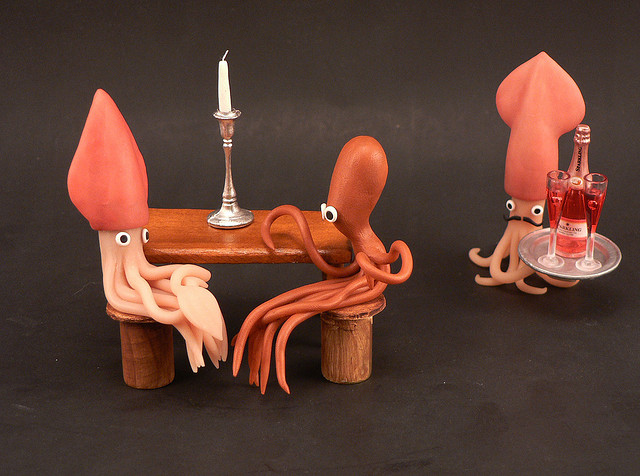
by Julienne Givot | Jun 16, 2011 | All Articles, Archetypes and Dating |

image©Justina Kochansky
Read Archetype attraction part 1: The Basics
Romantic Archetypal Chemistry is based on complimentary needs. Typically it’s either an archetype we value or one that reflects qualities we want to see in ourselves. This is the kind of attraction we usually think of in terms of romance and dating. You know, that subtle “the puzzle pieces just fit together” kind of attraction. That’s great right? Who doesn’t like feeling that way? Of course there are some pitfalls to Romantic Archetypal Chemistry because the ingrained traits and their shadowy bits can make for a rough time once the heady days of romance wane. This, my friends, is where the archetypal view becomes even more helpful.
Romantic Archetypal Chemistry means that there are qualities that you both have that work well together because each feels the one has something the other lacks. The big reality check is that this isn’t always strictly true, it just seems like it. Call it mirroring or projection, each need and need not fulfilled by the other can either be an ugly wedge into a relationship or a way to gain a much bigger understanding.
Take these classic Romantic Archetypal Chemistry combinations below for example. It’s not hard to see where the interdependence starts to form. And from that, guilt and resentment can grow like mold in a frat house fridge.
- Victim & Rescuer (or Healer, Caregiver,Hero)
Is this really considered Romantic, you might ask? In the way of Western Psychological Romance, I believe so. Look to many the romantic novel or film and you’ll see the dynamic of perceiving that the other has something one lacks and is attracted for that very reason. It’s based on a belief that you and the other person somehow complete a circuit, but many times it’s a circuit of lack and not necessarily fruition.
Are these combinations doomed because of their inherent attraction and difficulties? Not at all. Knowing what the expectations are can make all the difference. If you know you have a Rescuer archetype you have a much greater understanding of how you operate and can choose not to enter into a relationship with someone who needs rescuing or not. This is something one of my clients took on and found it life changing – read about it in this case-study.
Next in the series: Romantic Chemistry: The Knight and the Damsel
Stay tuned for more!
Commments? Questions? Leave a message below.
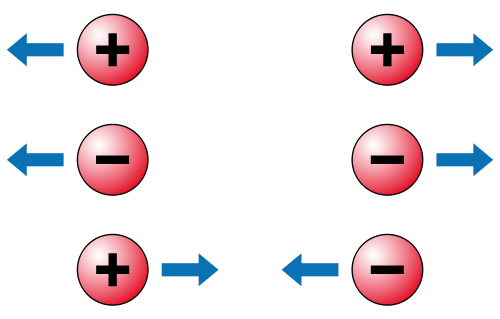
by Julienne Givot | Jun 15, 2011 | All Articles, Archetypes and Dating |
We are attracted to people by archetypal patterns. For most people it can be so subtle that you don’t know what’s going on, but paying attention to these powerful patterns can really improve your dating experience. I mean, wouldn’t you want something to help guide you through the sometimes dark and murky forest of dating life and toward what you are really looking for?
what’s going on, but paying attention to these powerful patterns can really improve your dating experience. I mean, wouldn’t you want something to help guide you through the sometimes dark and murky forest of dating life and toward what you are really looking for?
No need to take tests, get astrological information, blood type or genealogy, just pay attention, suss out the patterns and go from there. In this series I’m going to break archetypal attraction down to some usable basics. The key to all of this is to pay attention in a new way – one that is a bit less emotionally cloudy. You needn’t be a detective, but someone who can see, listen and be present to what is going on with yourself and the people you are meeting.
There are two basic ways to look at archetype attraction, Romantic Archetypal Chemistry and Shared Archetypal Chemistry. We are repelled by certain archetypes too but I’ll cover that in another post.
Archetypes are short hand for an indelible collection of behaviors, personality traits and most importantly motivations. They have a light side and a dark side. Unless you are living on another planet, you can bet that it’s only the happy shiny version of the archetype that’s showing up for dates for the first few months.
“When you date…have you ever noticed when you meet somebody for the first time, you’re not meeting them. You’re meeting their “representative”. Then after a about 3 months you meet the REAL Candidate” ~Chris Rock
Knowing the archetypal makeup of yourself (both the shiny and the dark) and the one(s) you are dating is a good way to have an idea of what the potential is for the relationship as well as steer clear of some unwanted dating mismatches. How do you do this? Well naturally working with someone like myself will give you that edge but I’m hoping that these articles will have you beginning to use these ideas.
To get you started – think about the relationship you are looking for – what archetypes do you want that person to have? What attracts you to those archetypes in another person? Use the archetype list here as a reference.
Archetype attraction part 2: Romantic Chemistry

by Julienne Givot | Jun 2, 2011 | All Articles, Archetypes and Dating |

Not an endorsement of the book, but a funny picture. Photo©Isaach Hsieh
I was at a gathering recently and mentioned that I was thinking of writing about archetypes and dating. Heads swiveled, glasses stopped clinking and I had the feeling that I was in some sort of TV commercial with all eyes on me. Everyone wanted to know more and where they could go to read up on my insights. The response, beyond being kinda funny, has been pretty much the same for everyone I’ve floated the idea out to. It’s a fascinating topic and with that kind of response, how could refuse?
Do archetypes play a part in dating? Oh indeed they do! In fact dating might be one of those activities that bring out some patterns that you might not have thought much about before or just took to be typical dating neurosis.
For some, dating is a joy, to others it’s a chore or even akin to a trip to the dentist. For those of you in the latter camps, here’s some good news, there is a different way to look at dating beyond the love it/hate it quotient. One that is as multi-contextual and fascinating as life itself and yet totally practical. Archetypes might be one of the best ways to get clear on who you are and what you want before you pick up the phone, go out to the bars, start that online profile or flirt with the girl/guy in line with you at Trader Joes.
So friends, fellow singles and interested parties I’m going to put what I know about archetypes and dating out there and include some of the things I’ve learned from other sources into this new series of posts. My style will be a bit more casual, and a bit more comical. Posts will always have the comment section open for questions and feedback. You could even start now by adding your own 2 cents worth, request or question.
Here is a list of all of the Archetypes and Dating posts
Yours Truly,
Julienne

by Julienne Givot | May 25, 2011 | All Articles, Archetypal Characters, In search of wisdom blog, Real Life Archetypes |
Are you the hub that connects a diverse group of people? If someone mentions they are looking for a new job or a place to have great Korean Barbecue do you have a list of suggestions for them? Do you make it a habit of never throwing out business cards or deleting numbers out of your phone, just in case you want to contact them or share their info with someone else (not counting ex-boyfriends/girlfriends). These are all traits of the Networker archetype.
 We are in an age of connectivity and it doesn’t appear that we can ever really go back to a time of slow paced communications. It’s as if technology is making Networkers of all of us to one degree or another.
We are in an age of connectivity and it doesn’t appear that we can ever really go back to a time of slow paced communications. It’s as if technology is making Networkers of all of us to one degree or another.
I had a chance to observe how people socialize in a Networker environment during last week’s Small Business Week in San Francisco. I could see people with a natural penchant for the Networker chatting up one person after another, exchanging business cards and moving on to the next. Others seemed a bit more reticent to walk up to a stranger and introduce themselves. If you fall into the latter category, here’s good news – you needn’t have the Networker archetype to make new connections, you just need to pay attention and find someone who is. The next step might be the most difficult for the shy, but will pay off with a deep breath and a “Hello, my name is. . .” to a Networker. If they are worth their salt in networking they will be glad to meet you and introduce you to more people with little prompting. Often times it’s as simple as staying in their orbit and letting them do what they do best. These are the social butterflies with the smart phone filled with contacts and are often the key to finding the people, resources and excellent gelato that you have been looking for.
Malcolm Gladwell’s book The Tipping Point: How Little Things Can Make a Big Difference is an ode to the power of this particular archetype. Imagine how many times in your life you have met just the right person or found just the right thing because you made one little contact. Gladwell goes even further to show us just how incredibly powerful the archetype of the Networker is to spread ideas and bring about change. He breaks the process down and provides real life case studies that apply to everything from political, ideological to fashion trends. He describes what I would call flavors of the Networker archetype, the Connector, The Maven and the Salesperson each with their own behaviors and motivations.
- The Connector has friends and acquaintances everywhere – they are the social glue that spreads an idea.
- The Maven collects knowledge and loves sharing it on the basis of educating. They are the information brokers or data banks of information. They are motivated not just by networking but by teaching (Teacher) and serving (Servant).
- The Salesperson enjoys helping and building relationships with optimism and physicality. They are natural persuaders and are able to connect people to ideas and products.
Little things can indeed make a big difference. Social Media websites like Facebook, Twitter and Yelp were created to facilitate just such things and have been known to make or break ideas, careers and products with their speed of communication and sheer reach into our collective consciousness.
There is of course an empowered side and a dis-empowered side to each archetype. The Networker can use it’s power for good or for selfish. Like many other archetypes, it’s shadow side is the reverse of it’s empowered behavior. The Networker can use it’s skills and connections for purely self-serving or manipulative purposes, pitting one connection against another, withholding information or delving into another related archetype with a pernicious bent, the Gossip.
So if you are a Networker, Connector, Maven or Salesperson you have what it takes to facilitate all sorts of connections, hopefully using your powers for good.
Archetype Crib Sheet:
Networker (Messenger, Herald, Courier, Journalist, Communicator)
Although networking seems like a very modern skill tied to career advancement in the media age, it is actually quite ancient. Networkers expand their sphere of influence by forging alliances and making connections among vastly different groups of people, and can be traced back to the intrigues of the Middle Ages, Greece, Rome, and ancient China. Networking would also have been an integral part of any military alliance as well as all social and clan confederations in prehistory. In its positive aspect, this archetype has a it helps us develop social flexibility and empathy that enables it to find commonality with others who might not at first seem to be potential friends, allies, or confederates. Like the related archetypes of Messenger and Communicator, the Networker has the skills to bring information–or power– and inspiration to disparate groups of people. The shadow Networker merely uses others for personal gain.
Films: John Boles in A Message to Garcia; Stewart Peterson in Pony Express Rider; Jeff Goldblum in Between the Lines; Reese Witherspoon in Legally Blonde; Rosalind Russell in Auntie Mame
Religion/Myth: Almost every culture on earth has or had a messenger of the gods who networks between the divine and human realms, including the angel Raphael (Judaism); Gabriel (Christianity); Jibril (Islam); Matarisvan (Vedic India); Eagle, Coyote (American Indian); Iris, Hermes (Greece); Mercury (Rome); Sraosa (Zoroastrianism); Nusku (Assyria); Nirah (Sumeria); Srosh (Persia); Paynal (Aztec); Savali (Samoa); Gou Mang (China); Narada (Java); Gna, Hermod (Norse)
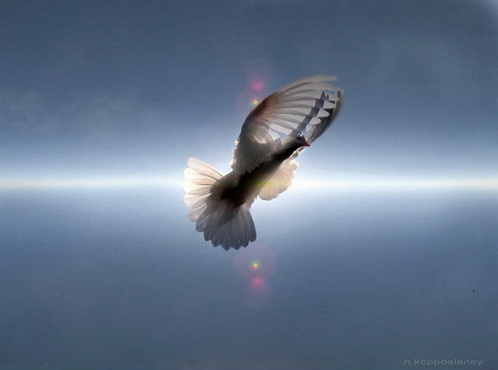
by Julienne Givot | Apr 23, 2011 | All Articles, Archetypal Characters, Pop Culture Archetypes, Real Life Archetypes |

Image courtesy of Identity Pursuit
“So much is happening in the world, earthquakes, revolutions and wars and you’re writing about the archetype of the Lover?” My reply: “Heck yeah, with all this chaos how do we approach what needs to be done without the passion of a Lover!?” She gave me a look of kind incredulity. “But the Lover? what could be more dreamy and ungrounded?”. I love my friend (pun intended), and her point is well made, the archetype of the Lover can be fluffy. The Casablanca version of this archetype is ubiquitous and needs little explanation, but to limit the Lover to only romantic endeavors would be carving out but a tiny slice of it’s potential expression.
At the risk of sounding like a tragically optimistic hippie – what the world needs now is love. There I said it. How about this – peace is sexy! Why does peace need to be a meek dove awaiting release from a cage? It doesn’t. It’s a succulent main course not a delicate dessert.
We’ve got war, strife, stress, anxiety and for some reason we fight fire with fire. That or we just tune it out with distractions. Both approaches take a lot of energy. The Lover is marked by passion, devotion and exuberance. All qualities we need to counterbalance the fear and confusion of the world scene today.
There are many forms of love and all can be expressed within the pattern of the Lover archetype. The ancient Greeks spoke of ‘agape’ or brotherly love as well as the erotic love related to the god Eros. It matters not which form, the Lover wants to be in touch with it both literally and figuratively. The Lover is about action and expression. It calls us to move out into the world or to at least take on a fuller more sense related (sensual) experience in our lives.
The 1989 film Dead Poets Society tells the story of the many forms of the Lover archetype. This 5 minute clip sets up the theme for the film which is centered around the ethos of the Lover – to devote oneself to passion and expression, in other words to love life and “Seize the Day”. It also tells of the potential cost of doing so in a society that might not support your efforts. Go ahead, watch the clip.
http://www.youtube.com/watch?v=qQtmGcdSDAI
The film uses the context of a stuffy boarding school in the 1950s as a metaphor for the hemmed-in life of society’s expectations and boundaries. Robin Williams plays Mr. Keating the Teacher/Liberator encouraging the boys to be ignited by their passions, to devote themselves to what their souls call them to do. The many iterations of the Lover are portrayed in the film interlaced with archetypes: hopeful Knox Overtstreet madly in love with the blonde cheerleader, rebellious Charlie Dalton enamored with freedom and expression, Todd the painfully shy Invisible Child who longs to express himself and Neil, the Artist who finds his souls expression in acting. I won’t spoil the end for you but just as in life, requiring approval can be disastrous especially with an archetype such as the Lover. The shadow of the Lover looms large towards the end of the film and evokes tragedy when love leads to obsession, desperation and a loss of faith.
Love is not something that you can save up and put in a bank account. It can’t be bottled, lent or borrowed. By nature it’s fiery and must be expressed in some way. An energy that must move can be channeled into our daily challenges, both personal and social.
How much more connected to purpose can one be than when they are in love? Imagine what it would be like to love a problem. The Lover is able to see the essence of the beloved and can hold that image through thick and thin. I realize this goes against many notions of how to take action or work with something as fractious as the problems we face now, but the old paradigms are crumbling and we are in need of some new patterns.
Archetype Crib Sheet:
This archetype appears not only in those who are romantically inclined, but also in anyone who exhibits great passion and devotion. One can be a Lover of art, music, gardening, Persian carpets, nature, or needlepoint. The key is having a sense of unbridled and exaggerated affection and appreciation of someone or something that influences the organization of your life and environment. The Lover is connected to issues of self-esteem because this archetype is so strongly represented by one’s physical appearance. Even if you have the Lover archetype prominently in your psyche, you may repress this pattern out of a lack of self-esteem, especially regarding your physical attractiveness. The shadow lover manifests as an exaggerated obsessive passion that has a destructive effect on one’s physical or mental health and self-esteem.
Films: Nicholas Cage in Moonstruck; Charles Denner in The Man Who Loved Women (Truffaut version); Ingrid Bergman and Humphrey Bogart in Casablanca; Ewan McGregor in Moulin Rouge, Dead Poets Society, John Hannah in Sliding Doors, Donna Reed in It’s A Wonderful Life, Jared Gilman and Kara Hayward in Moonrise Kingdom
Drama: Romeo and Juliet by Shakespeare Books:
Fiction – Stealing Heaven by Marion Meade (Abelard and Heloise),
Non-fiction – King, Warrior, Magician, Lover by Robert Moore and Douglas Gillette
“The problem, if you love it, is as beautiful as a sunset.”
~Krishnamurti
(With thanks to my client, Val for reminding me of this great quote!)
Here’s a great post on Peace is Sexy.
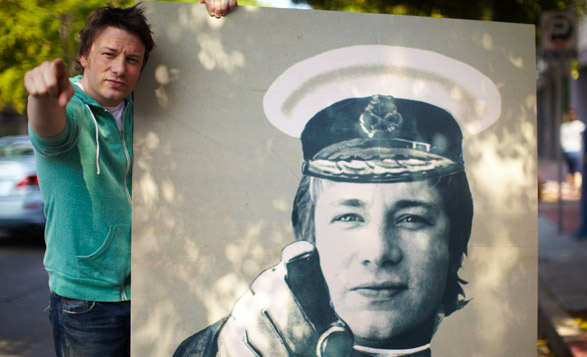
by Julienne Givot | Mar 10, 2011 | All Articles, Archetypal Characters, In search of wisdom blog, Pop Culture Archetypes, Real Life Archetypes |
 I haven’t found a more potent and exciting combination of the Hedonist and the Revolutionary archetypes than in Jamie Oliver (formerly know as the Naked Chef). One of the the UK’s brightest culinary exports is taking America by storm and I for one love him all the more for it. He won the TED prize in 2010 and began by using his 100k grant to start a Food Revolution!. One year later his progress is stunning and includes a partnership with the American Heart Association and numerous thriving community projects. You can read more about it here at TED.com
I haven’t found a more potent and exciting combination of the Hedonist and the Revolutionary archetypes than in Jamie Oliver (formerly know as the Naked Chef). One of the the UK’s brightest culinary exports is taking America by storm and I for one love him all the more for it. He won the TED prize in 2010 and began by using his 100k grant to start a Food Revolution!. One year later his progress is stunning and includes a partnership with the American Heart Association and numerous thriving community projects. You can read more about it here at TED.com
Jamie is an archetypal Hedonist – he loves food – good food – nutritious and delicious food. He is rebelling against the status quo (Rebel) of processed food and unhealthy diets and is a Revolutionary leading a movement to change the way we eat, what we feed our children and how we treat food in general. Watch his impassioned speech from the TED Awards and you’ll see this Hedonist/Revolutionary using his powers for good and not evil.
Jamie’s mad as hell that American children are being fed so poorly and he’s not going to take it any more! This Food Revolution was televised last year on ABC and now can be seen online at Hulu.com. Besides being educational, the program was entertaining and engaging in a way only someone with a great deal of passion for change and a good bit of playful sensibility could. Along with the Hedonist, Rebel and Revolutionary archetypes, I’ve observed the Divine Child, Father, Teacher and the Fool playing out in Jamie both on television and how he presents himself in his work.
“This Food Revolution is about saving America’s health by changing the way people eat. It’s not just a TV show; it’s a movement for you, your family and your community. If you care about your kids and their future, take this revolution and make it your own. Educate yourself about food and cooking, and find out what your child is eating at school. Make only a few small changes and magical things will happen. Switching from processed to fresh food will not only make you feel better, it will also add years to your life.” ~ Jamie Oliver
What is most exciting for me is that the combination of Hedonist and Revolutionary presents a deeply personal examination of both how we care for our health in terms what we eat and the pleasurable, social aspects of eating as a joyous and healing experience.

Image via Wikipedia
Jamie is not the first Hedonist-Revolutionary however. Alice Waters of the famed restaurant, Chez Panisse began her crusade decades ago and continues to revolutionize how we grow, cook and share food through her Chez Panisse Foundation and the Edible Schoolyard.
Archetype Crib Sheet:
Hedonist (Related archetypes Bon Vivant, Chef, Gourmet, Sybarite) This archetype has an immense appetite for the pleasurable aspects of life, from good food and wine to sexuality and sensuality. Indulging the self is central to the psyche of this archetype, whether treating oneself to a health spa or creating and indulging in delicious food. The Hedonist celebrates life in all it’s pleasure, with joy and sensuality. The shadow Hedonist may manifest as being self-indulgent without regard for other people or one’s own good health.
Films: Babbette’s Feast, Like Water for Chocolate, Big Night, Tampopo, 91/2 Weeks, Sex and the City 2
Fiction: Tom Jones by Henry Fielding; The Unbearable Lightness of Being by Milan Kundera; Les Liaisons Dangereuses by P. Choderlos DeLaclos.
Revolutionary This archetype of the Revolutionary is motivated to radically transform the conventional order. The Revolutionary awakens consciousness and works for change in any area from politics to science, art and in the case of Jamie Oliver & Alice Waters, the way we view and consume food. Revolutionaries are also inventors and business people who create and promote ground-breaking new products and services that create change. Director Lars von Trier and his Dogme 95 Collective are an excellent example of revolutionary ideas in action in the art of film making.
Films: Motorcycle Diaries, The Corporation, V for Vendetta, Fahrenheit 9/11, Exit Through The Gift Shop, Star Wars (original trilogy), The Social Network.
Theater: Bertolt Brecht
Books: The Moon is a Harsh Mistress by Robert A. Heinlein, Dune by Frank Herbert, The Future of Revolutions: Rethinking Radical Change in the Age of Globalization edited by John Foran,

by Julienne Givot | Feb 9, 2011 | All Articles, Archetypal Characters, In search of wisdom blog, Real Life Archetypes |

Darryl “DMC” McDaniels
“Everything happens for a reason.” Says Darryl “DMC” McDaniels, who is one third of the pioneering rap group Run DMC and one of the most influential rap artists of all time. At the age of 35, DMC made a startling discovery and suddenly, everything he thought he knew about himself had changed. He told his story on stage at a Moth Storytelling event which was aired on the radio and subsequently published as a podcast. Info on subscribing to the free podcast here.
DMC’s story caught my attention because it’s about purpose, destiny and the seemingly small things that can lead us to it’s discovery. Even something as simple as hearing a song on the radio. The archetypes of the Artist, Midas, Angel and Orphan feature prominently in this true story. I’ve noted them parenthetically.
Darryl had everything he wanted (Midas). An incredible career, top selling records, fame, money, respect, a healthy family, good upbringing – the whole thing and yet he was depressed (Artist). While on tour in Europe he began to have suicidal thoughts. He could sum up all of the things that were wonderful in his life but he couldn’t connect it all together, something was missing. He decided to put off thoughts of suicide until the tour was over. When he returned home, he got in the limo and heard a song on the radio called “Angel” by Sarah McLachlan. As he listened to the song, something in him said “life is beautiful, it’s good to be alive”. (Angel)
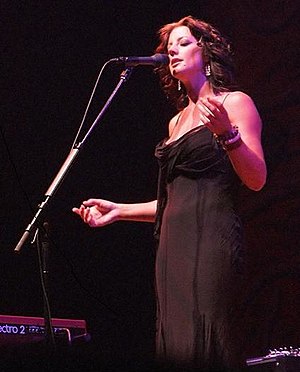
Image via Wikipedia
For the next year, listening to Sarah McLachlan’s music was all that kept him going. His obsession with her music confounded his friends and colleagues. He is a rap star after all and what is he doing just sitting at home listening to some chick folk singer? His manager convinced him to leave the house to attend a music industry party. DMC wasn’t interested in going, but agreed to go for an hour. Even though he was surrounded by pop luminaries like Stevie Wonder and Alicia Keyes, DMC couldn’t care less (Orphan). He was counting the minutes until he could leave when Sarah McLachlan walked into the room. He finally had the opportunity to meet her and tell her how much her music meant to him. To hear him tell it, he came off like a bit of a lunatic praising her music and how it changed his life. She demurred and thanked him saying “That is what music is supposed to do”. (Much like an archetypal Angel would do.)
Three years go by and Darryl is still trying to figure out what he is missing. He decides to write an autobiography and calls his Mom to ask her about when he was born. His perspective completely pivots when his parents tell him that he was adopted. (Orphan)
“Now if you think there is really a time to commit suicide, finding out you’re adopted at age 35… but right then and there something happened. I remembered, when I asked myself ‘am I here to be DMC?’ and summed it up, that, was the missing piece, the void was filled. I really wanted to kill myself but then I remembered something, Sarah McLachlan said ‘that’s what music is supposed to do’. So I said ok before I get suicidal, depressed and do something real crazy, I need to write a record that’s going to help that little orphan or that little kid in foster care who thinks they threw me away, I’m worthless, I mean nothin…because I may be DMC but what I really represent is purpose and destiny. I need to make a record that will inspire somebody the way Sarah McLachlan inspired me.” ~ Darryl “DMC” McDaniels
What this revelation brought about was just that. In fact he contacted Sarah McLachlan and they recorded a hip hop mash up of Harry Chapin’s “The Cat’s in the Cradle” together and dedicated it to “every life and every soul touched by the reality and experience of adoption“. Just as Darryl was leaving the recording studio Sarah said “I’ve got to tell you something. I was adopted too, and I didn’t know that.” Everything happens for a reason.
In 2006 Darryl “DMC” McDaniels was presented with the Congressional Angels in Adoption Award for his work with children in foster care promotion of adoption.
Click to watch the video of “Just Like Me” by DMC featuring Sarah McLachlan
Click to watch the video for Sarah McLachlan’s “Angel”
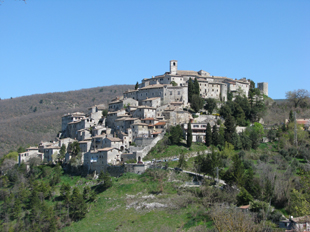
by Julienne Givot | Jan 13, 2011 | All Articles, Archetypal Characters, In search of wisdom blog, Real Life Archetypes |

The still life of an Artmonk
How do archetypal motivations become passions that bring something new into the world? Sometimes one enriches another so much as to create a whole new experience. Inspiration is the deity of the Artist and contemplation the mark of the Monk/Nun. These two archetypes might not ordinarily be considered a natural synergistic match but in 2006, Bay Area artists Betsy McCall and Christopher Fülling began such an adventure in creativity and contemplation called The Art Monastery Project.
The Art Monastery Project is a contemporary experiment in social sculpture inspired by the tradition of the Monk/Nun: to apply the disciplined, contemplative, and sustainable monastic way of living to the creative process of the Artist.

Labro, Italy – home of The Art Monastery Project
Betsy and Christopher, along with a growing group of like minded ‘Artmonks’ embarked on a search for a location to put down roots for their project in 2007. Europe is home to many monasteries and convents that now sit empty, virtually waiting for their next community to inhabit them. After a search of over 25 different locations, they found their ideal home in the monastery San Antonio in the medieval hill town of Labro, 70 minutes north east of Rome, Italy. The building dates back to the 17th century when it was a Franciscan monastery and now hosts the artists of the Art Monastery Project, as well as a world-class hotel and a restaurant.
This international group of multi-disciplinary artists seeks to create original, collaborative work and live together as an intentional community. The practices of the Monk not only serve the creative process of the Artist but also honor the community and environment in which they live. The people of Labro have embraced being a part of this symbiotic relationship and are active participants in cultivating their town as a center of art and cultural tourism.

The guiding principles of The Art Monastery Project
Our world has been shaped by passionate people who reflect deeply about what they can give and who embrace their full creative inspiration and dedication to manifest this insight into being. The Artmonks are passionate about artistic excellence, innovative spiritual process and the investigation into the nature and benefits of community living. They are open to new international collaborations as well as new community members. Local Artmonk groups are being formed all over the United States.
For more information on the Art Monastery Project, how you can give your support or even join in on the experience visit their website. They also have a You Tube channel with videos of their stunning dance, music and other artistic productions.
Archetypes Defined:
The archetype of the Artist is marked by passion to express a dimension of life that is just beyond the five senses. The Artist psyche is animated with the energy to express it into physical forms. The nature or relative grandeur of any form of expression is irrelevant; a chef can be as much of an artist as a painter or landscaper. The signature of artists is not in what they do but in how intense their motivation is to manifest the extraordinary. Doing what you do in such a way that you create an emotional field that inspires others also indicates the Artist energy at work, as does the emotional and psychological need to express yourself so much that your well-being is wrapped up in this energy.
The archetype of the Monk/Nun is marked by intensity, devotion, dedication, persistence, and wisdom. On the shadow side, the role of a religious recluse could be seen as removed from the real world, overly pious, even privileged in the sense of not having to be concerned about earning a living or raising a family. Yet, historically, monks have been extremely industrious and involved in real-world enterprises, whether draining swamps and planting vineyards in medieval Europe, working the rice fields in Asia, building monasteries, teaching, or copying and preserving texts. Today the Monk archetype may show up in the ability to be single-minded, assiduous, devoted to a spiritual path or to any great achievement that requires intense focus. In this sense, novelists and entrepreneurs can carry the Monk as readily as spiritual adepts.

by Julienne Givot | Nov 21, 2010 | Uncategorized |
 Looking for a gift that keeps on giving? Consider some of these original creations that will benefit some worthy causes.
Looking for a gift that keeps on giving? Consider some of these original creations that will benefit some worthy causes.
Kiungo – Images of Africa is a book of beautiful photographs taken in Africa by 28 photographers from around the world and curated by yours truly. This book is a benefit for The Masomo Project a small non-profit group dedicated to educating the orphans of the Starehe Children’s home in Mwanza, Tanzania. All proceeds go to the charity, which is also a 100% volunteer run organization. Click here for more information and to buy the book. Ships anywhere in the world. Softcover book $35 , Digital Download $15
Laughter and Inspiration 2011 Calendar is a full color calendar featuring my original photographs paired with funny, inspirational quotes from a diverse thinkers such as Mark Twain, Joseph Campbell, TS Eliot, Eudora Welty, George Carlin, Ursula LeGuin and more. From now until the end of the year, I will donate 100% of the profits from each calendar sold to Raphael House family shelter in San Francisco. Click here to view or purchase the calendar. $19.99
 The Nature Conservancy is promoting Green Gift Monday and has put together a virtual mall of green gifts, everything from adopting a coral reef in Palau to eco-sustainable apparel, home and garden accessories as well as books and DVD’s.
The Nature Conservancy is promoting Green Gift Monday and has put together a virtual mall of green gifts, everything from adopting a coral reef in Palau to eco-sustainable apparel, home and garden accessories as well as books and DVD’s.
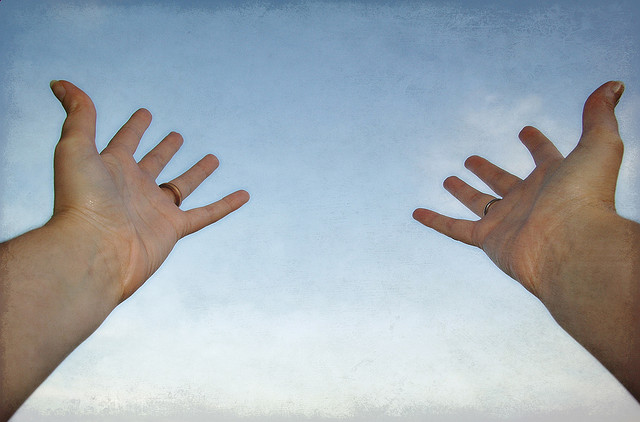
by Julienne Givot | Nov 18, 2010 | All Articles, Archetypal Characters, In search of wisdom blog, Real Life Archetypes |

Image by Loving Earth via Flickr
Know a Martyr? Most people have had the experience of working with or knowing someone with a Martyr archetype, or maybe you even see it in yourself. I’d like to provide some information in order to help understand and work with this pattern.
Bad Reputation The Martyr archetype seems to get a bad rap and I think I know why. It has to do with the Martyr’s very visible shadow form and a motivation behind the behavior that is not always clear. You might be familiar with the ‘hand-on-forehead-oh-I’ll-do-it-because-no-one-else-will’ type of Martyr behavior. This is but one shadow aspect of the pattern that has garnered a bad reputation but there is far more to it than that.
Motivation The heart of any archetypal pattern is its underlying motivations. Unless we are looking for this archetype in ourselves we won’t always know what is motivating the person involved, but being aware of the probable motivators can make all the difference. This awareness enables us to work with the archetype more effectively and take things less personally.
Witness, Sacrifice, Receive The archetype of the Martyr has it’s roots in witnessing as much as in sacrifice. The word ‘martyr’ itself comes from the Greek word for ‘witness’. It is synonymous with a willingness to proceed because of a higher cause or truth despite the risk of injury or sacrifice. While we tend to associate the Martyr with its shadowy side of manipulation, at it’s core it’s about doing the right thing – even if that right thing is just in the mind of the individual. An important and often overlooked facet of this archetype is that of receiving, be it help, praise, recognition or what have you. I found this written about the archetype of the Martyr at work in the Organizational Development Journal helpful:
Healthy martyrdom revolves around sacrifice by choice, which opens the martyr to receive as well as to give. People who feel they must take care of everything and everyone, yet refuse to receive in return, are acting out the shadow aspect of the Martyr archetype. Their ceaseless giving permits them to manipulate and feel superior to those they are helping, even as they complain about how deprived they are.
Mistaken Identity Since the behavior can be similar, maybe people confuse the Martyr with other archetypal patterns. The difference is in the motivation. Below is a list of a couple that I come across frequently in my practice.
- If the core motivation is feeling less valuable and therefore doing more to seem of greater value – it’s not the Martyr but the Prostitute archetype at play.
- If the core motivation is to protect from being taken advantage of, doing more or showing up in a way so as to fend off criticism, it’s most likely the Victim archetype. Of course it could be a little of both.
The Martyr is also mistaken for the Hero, Advocate, and Avenger archetypes but differs in the fulcrum of it’s motivation. The Martyr can very often be an aspect of the Mother and Father archetypes where the role of witness for the family tends to fall to one or both of the parents in addition to the sacrifice called forth by the archetype.

Statue of Joan of Arc / photo ©Julienne Givot
The Empowered Martyr The empowered Martyr witnesses a higher principle and is willing to go the distance not for themselves but for the benefit of others. It’s the witnessing and not just the sacrifice that makes a Martyr.
Modern Martyrs Lilly Ledbetter was employed by Goodyear Tires for nineteen years before she discovered that she was paid far less for the same work as her male peers. She filed a lawsuit against Goodyear, and after a long legal battle, her case was ultimately decided by the U.S. Supreme Court; she lost. The Supreme Court stated she had taken too long to file a complaint. Ledbetter pursued an effort to persuade congress and the President that there was a need for change. Over a decade later she succeeded and the Lilly Ledbetter Fair Pay Act was signed into law in early 2009. A woman of retirement age, who probably had other things to attend to, decided that the principle of fair pay was worth the effort and sacrifice even if she herself would not be able to take advantage of the goal she worked for. This is the heart of the empowered Martyr.
A mention of modern day representations of the Martyr archetype would be remiss without of course honoring Civil Rights pioneers Martin Luther King Jr. and Harvey Milk, Rwandan genocide survivor Immaculée Ilibagiza, and most recently Aung San Suu Kyi Nobel Peace Prize Winner from Burma.
Related Podcast
References
Films: Paul Scofield in A Man for All Seasons; Meryl Streep in Silkwood; Denzel Washington in Malcolm X; Ben Kingsley in Gandhi; Sean Penn in Milk; Made in Dagenham
Drama: Saint Joan by G.B. Shaw.
Fiction: A Tale of Two Cities by Charles Dickens; Little Bee by Chris Cleave
Religion/Myth: Many Christian saints, including Joan of Arc; Mansur al-Hallaj (10th-century Sufi mystic martyred for his belief that God existed within him).
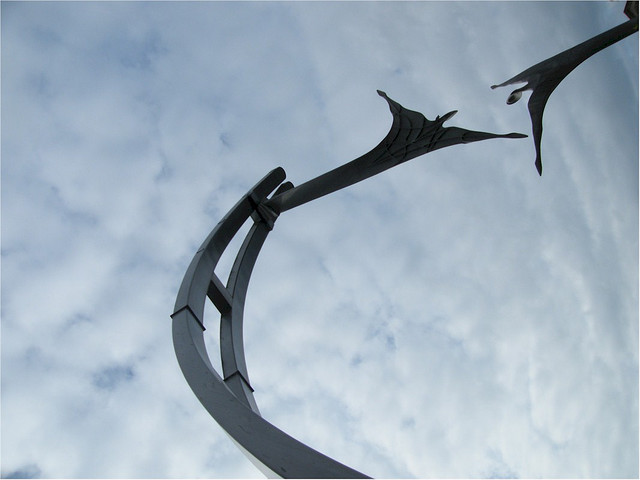
by Julienne Givot | Oct 25, 2010 | All Articles, Archetypal Characters, In search of wisdom blog, Real Life Archetypes |

Image via Wikipedia
I try to make a point to write about what could be called the ‘unsung’ archetypes. One’s that don’t seem to have a popular or even a very present place in our culture. Last month I wrote about the archetype of the Scribe to illuminate it’s presence and potential for positive change.
I’ve recently come across some wonderful pieces of poetry and it brought to mind the power of the Poet archetype. For many people poetry can seem lofty , arcane or just downright fluffy in terms of day to day life and yet a good piece of poetry can stop us in our tracks with it’s ability to communicate a deep truth. T.S. Eliot I think puts it best.
“Genuine poetry can communicate before it is understood.” ~T.S. Eliot
When I come upon genuine poetry as Eliot describes, I am taken aback by its ability to circumvent the mind and drop away all it’s judgment so I can just be with something true.
My recent discovery is that of the contemporary Poet, David Whyte. He embodies the Poet archetype as well as the Teacher, the Philosopher and the Guide. He is not only a respected Poet but also teaches corporate executives and businesses using poetry as well as being the author of several non-fiction books. In reading his work I felt first-hand, the power of the Poet – the transmission of a truth with a capital ‘T’.
Start close in,
don’t take the second step
or the third,
start with the first
thing
close in,
the step you don’t want to take.
(Excerpted from “Start Close In” – the full poem can be found here.)
In trying to sum up the deepest power of the Poet archetype, I found exactly what I was looking for in the description of one of Whyte’s workshops:
Poetry as Robust Vulnerability: Language Against Which We Have No Defenses: Poetry is a break for freedom. The discipline of poetry is in overhearing yourself say difficult truths from which it is impossible to retreat. In a sense, all poems are good; all poems are an emblem of courage and the attempt to say the unsayable. Yet only a few are able to speak to something universal yet personal and distinct at the same time; to create a door through which others can walk, into territory that previously seemed unobtainable, in the passage of a few short lines.
Now that is a power worth treasuring! I’ll agree with Shelley when he said that Poets are the unacknowledged legislators of the world.
References
Films: Glenda Jackson in Stevie; Philippe Noiret in Il Postino; Sean Connery in A Fine Madness, Leonardo DiCaprio in The Basketball Diaries; Wes Bentley in American Beauty, Ethan Hawke in Dead Poets Society; Janet Jackson and Tupac Shakur in Poetic Justice
Fiction: The Basketball Diaries by Jim Carroll (shadow);
Religion/Myth: King David (ruler of Israel credited with writing many of the Psalms); Orpheus (great musician and poet of Greek myth, capable of charming wild beasts); Bragi (in Norse myth, the god of eloquence and patron of poets); Finn Mac Cumhail (legendary Irish hero and leader who was also greatly skilled as a poet).

 Examples of the Gambler/Wheel of Fortune Archetype in film:
Examples of the Gambler/Wheel of Fortune Archetype in film: 



 that only remote regions can give. Card number 9 allows our hero traveling through the Major Arcana to either meet or become this humbled figure full of in-sight, as represented by his seeking lantern. A re-evaluation of his journey is required after a run-in with the objectivity of Justice, before he can once again chance the Wheel of Fortune (Card number 10). Consideration of this card allows us all a moment to reflect without being sucked into eternal isolation – the shadow side of the Hermit. Fresh from a (hot) visit from her hometown of Joshua Tree, California, Cyndera shares fresh inspiration after encountering an old friend who embodies the Hermit archetype. Julienne takes us on a tour of the hermitic nature of the American literary Renaissance along with some insights on the Hermit from film and popular culture.
that only remote regions can give. Card number 9 allows our hero traveling through the Major Arcana to either meet or become this humbled figure full of in-sight, as represented by his seeking lantern. A re-evaluation of his journey is required after a run-in with the objectivity of Justice, before he can once again chance the Wheel of Fortune (Card number 10). Consideration of this card allows us all a moment to reflect without being sucked into eternal isolation – the shadow side of the Hermit. Fresh from a (hot) visit from her hometown of Joshua Tree, California, Cyndera shares fresh inspiration after encountering an old friend who embodies the Hermit archetype. Julienne takes us on a tour of the hermitic nature of the American literary Renaissance along with some insights on the Hermit from film and popular culture. I also found it amusingly appropriate that Led Zeppelin used the image of the Hermit for their single ‘Stairway To Heaven’ which carries lyrics capturing the ideas of the Hermit’s quest.
I also found it amusingly appropriate that Led Zeppelin used the image of the Hermit for their single ‘Stairway To Heaven’ which carries lyrics capturing the ideas of the Hermit’s quest. is number 8 of the Major Arcana.
is number 8 of the Major Arcana.


 The Eighth edition of the Archetypal Tarot Podcast explores the movement and meaning encompassed by the Chariot, card number 7 of the
The Eighth edition of the Archetypal Tarot Podcast explores the movement and meaning encompassed by the Chariot, card number 7 of the 


 The Seventh edition of the Archetypal Tarot podcast reveals our heroic Fool at his/her first genuine choice point represented by card number six, The Lovers. The Lovers brings into focus this important first choice and reminds us that love, balance and companionship are called for. This stage has us examine the archetypes of the Lover as well as the Companion. A reminder to access both our masculine ‘doing-ness’ and feminine receptivity.
The Seventh edition of the Archetypal Tarot podcast reveals our heroic Fool at his/her first genuine choice point represented by card number six, The Lovers. The Lovers brings into focus this important first choice and reminds us that love, balance and companionship are called for. This stage has us examine the archetypes of the Lover as well as the Companion. A reminder to access both our masculine ‘doing-ness’ and feminine receptivity.

 The Sixth edition of the Archetypal Tarot Podcast explores the meaning of the Hierophant card of the Tarot as a stage of a journey where one examines the traditions, organizations and structures of one’s life as well as how and who to seek higher guidance from. The Hierophant, also called the Pope card in traditional Tarot decks also symbolizes the archetypes of the Priest, Guide, Guru, Shaman,Wise Man and Messiah. Truly a symbol of higher wisdom, this card is a symbol of seeking greater or spiritual knowledge.
The Sixth edition of the Archetypal Tarot Podcast explores the meaning of the Hierophant card of the Tarot as a stage of a journey where one examines the traditions, organizations and structures of one’s life as well as how and who to seek higher guidance from. The Hierophant, also called the Pope card in traditional Tarot decks also symbolizes the archetypes of the Priest, Guide, Guru, Shaman,Wise Man and Messiah. Truly a symbol of higher wisdom, this card is a symbol of seeking greater or spiritual knowledge.
 The Fifth edition of the Archetypal Tarot Podcast explores the meaning behind the Emperor card of the Tarot as a stage of a journey where one is asked to create structure and practical plans for your project or dream so that it can be fortified before going on to the next stage of the journey. The Emperor symbolizes the archetype of the Father as well as the King. Listen in as Julienne and Cyndera discuss these important patterns to our growth and flourishing.
The Fifth edition of the Archetypal Tarot Podcast explores the meaning behind the Emperor card of the Tarot as a stage of a journey where one is asked to create structure and practical plans for your project or dream so that it can be fortified before going on to the next stage of the journey. The Emperor symbolizes the archetype of the Father as well as the King. Listen in as Julienne and Cyndera discuss these important patterns to our growth and flourishing. Gregory Peck in ”To Kill a Mockingbird'”(1962)
Gregory Peck in ”To Kill a Mockingbird'”(1962)


 The third ‘A’ is for Authenticity which believe it or not, invokes
The third ‘A’ is for Authenticity which believe it or not, invokes 
 ways people bond. Social groups and even companies stick together based on archetypal patterns. The archetypes of a group tend to form the goals and not the other way around.
ways people bond. Social groups and even companies stick together based on archetypal patterns. The archetypes of a group tend to form the goals and not the other way around.




 what’s going on, but paying attention to these powerful patterns can really improve your dating experience. I mean, wouldn’t you want something to help guide you through the sometimes dark and murky forest of dating life and toward what you are really looking for?
what’s going on, but paying attention to these powerful patterns can really improve your dating experience. I mean, wouldn’t you want something to help guide you through the sometimes dark and murky forest of dating life and toward what you are really looking for?


 We are in an age of connectivity and it doesn’t appear that we can ever really go back to a time of slow paced communications. It’s as if technology is making Networkers of all of us to one degree or another.
We are in an age of connectivity and it doesn’t appear that we can ever really go back to a time of slow paced communications. It’s as if technology is making Networkers of all of us to one degree or another.


















